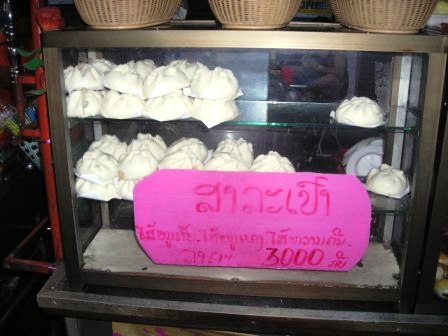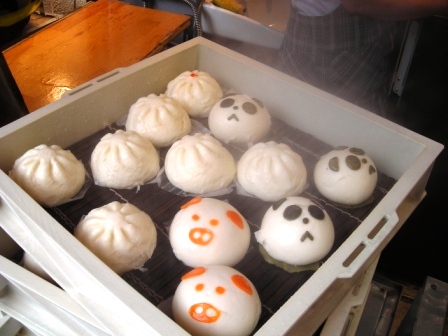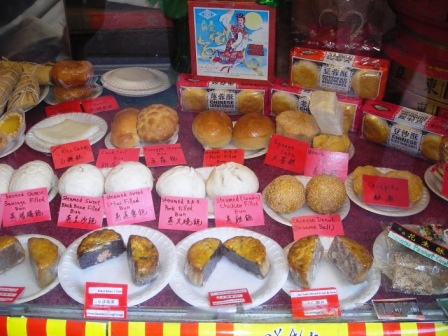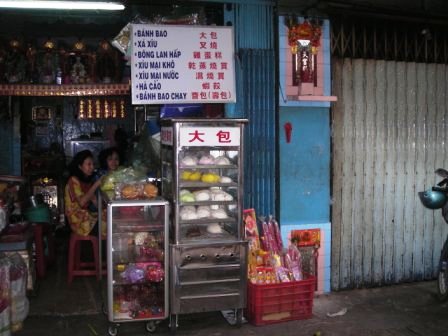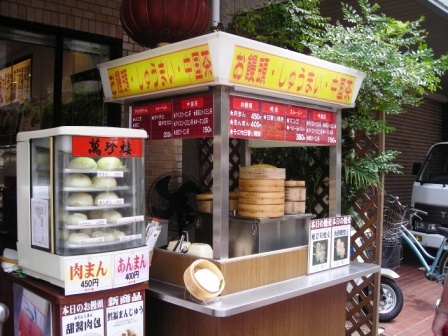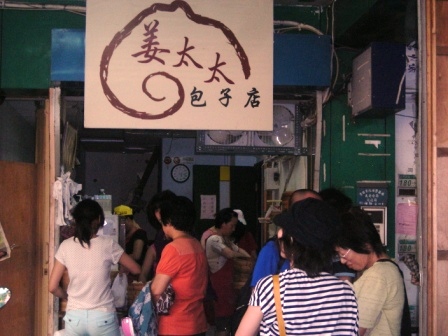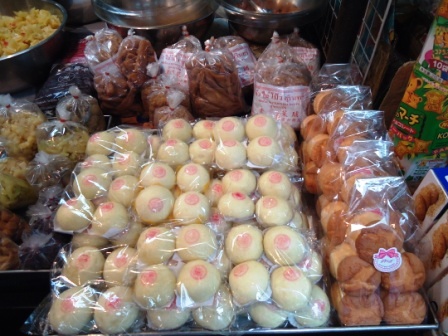Bao and Mantou
包与馒头
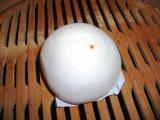 Bao (or pau), and mantou (包,馒头); they are everywhere and almost impossible to miss them. If you visit any Chinatowns around the world, enter an Asian supermarket or dine at a Chinese restaurants or food outlets, you are likely to have seen, smell or even eaten them. That is how prevalent bao, 包, and mantou, 馒头, are. Bao (or pau), and mantou (包,馒头); they are everywhere and almost impossible to miss them. If you visit any Chinatowns around the world, enter an Asian supermarket or dine at a Chinese restaurants or food outlets, you are likely to have seen, smell or even eaten them. That is how prevalent bao, 包, and mantou, 馒头, are.
Introduction to Bao
As a general introduction, bao and mantou is a type of steam bun. Mantuo is usually plain with no filing and round with both sides flatten. It is eaten plain or sometimes served as a side dish.
Bao or baozi (包子) on the other hand have either sweet or savory fillings. It is round in shape with a flat base and almost always white in color with red or yellow dots to identify its fillings. There is also a leaf bao that opens like a leaf and usually used for adding a piece of pork in between.
The distinction between mantou and bao is not universal as the names are interchangeable and varies from region to region.
History of bao
As humble as it may look, bao and mantou actually has a very long history. In fact, it was mentioned in texts as early as the Warring States period in China thus dating the existence of bao and mantou to more than 2000 years ago. This makes bao and mantou even older than the famous terra cotta warriors of the Qin Emperor, the first emperor of China,秦始皇.
In Romance of the Three Kingdoms, mantou was also said to be associated with the famous strategist Zhu Ge Liang, 诸葛亮, who supposedly made ritual offerings of mantou stuffed with meat in place of human sacrifice. In recent times, bao was also featured as the main theme in pop songs and movies.
Despite its ancient legacy, bao and mantou are highly adaptable and have evolved and continue to do so. It is sometimes a star on its own and sometimes a supporting cast in Chinese food culture.
The versatile bao
Bao and mantou can be found in dim sum restaurants served in round bamboo holders, packed in plastic packaging in a supermarket freezer, or in bamboo steamers at food stalls. In Yokohama Chinatown, their bao is even painted to resemble panda bears and pigs.
Bao and mantou can be consumed as a fast-food for people on the go or enjoyed as dish in a Chinese or even fusion restaurant. As a side dish, mantou is deep fried or steamed. In Singapore and Malaysia, mantou is consumed by dipping it into the gravy of chili crab dishes.
There is even a special streamer designed for bao to keep it warm, fresh and soft. It is a tower made of glass with trays of drawers. Each drawer holds different types of bao and steam passes from the bottom to the top of the tray keeping the bao warm and fresh. There are also smaller plastic ones for samller businesses or homes.
Maybe due to its simplicity or flexibility, bao and mantou have enjoyed immerse popularity for over 2000 years and attracted new technologies to support the sales and distribution of bao and mantou extending its reach to consumers.
So the next time when you come across a bao or mantou, enjoy it and appreciate its long historical legacy.
Related Articles:
|

 Bao (or pau), and mantou (包,馒头); they are everywhere and almost impossible to miss them. If you visit any
Bao (or pau), and mantou (包,馒头); they are everywhere and almost impossible to miss them. If you visit any 